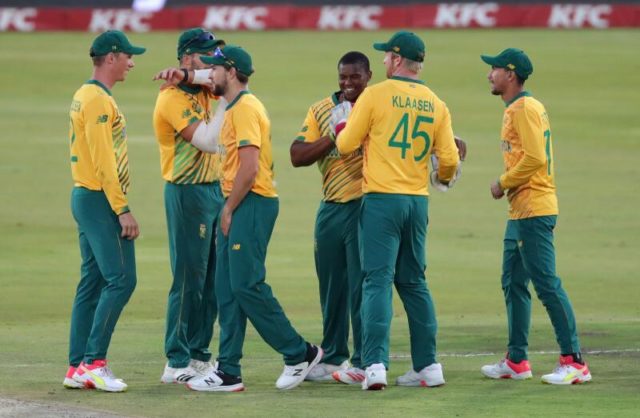Stuart Hess looks at what the Proteas did right and what they need to work on after their T20 series against Pakistan.
JOHANNEBSURG – Stuart Hess looks at what went right and wrong for the Proteas against Pakistan in the T20 series.
What went right:
Janneman Malan and Aiden Markram forged an unlikely partnership at the top of the order that may not be seen again, once captain Temba Bavuma returns from injury and Quinton de Kock from the IPL.
What it does give the selectors is an option at the top of the order that could be a backup at the World Cup.
ALSO READ: Proteas’ poor form frustrates Boucher
Who that will be is the big question; Malan hit the ball sweetly and is outstanding in the field, Markram carried his first class form into the limited overs formats, is good in the field and is an option with the ball.
George Linde and Tabraiz Shamsi stood out with the ball, although both would have liked to be more consistent. Linde has made a stunning leap into the international game, and his abilities with the bat, makes him a strong candidate for the starting team at this year’s World Cup.
There was a lovely energy to Lizaad Williams’ play while Sisanda Magala is obviously a very talented bowler, but his technical discipline is sadly lacking, while concerns remain about his fitness.
Rassie van der Dussen remains a very smart and consistent performer across all formats.
South Africa showed in that second T20 match, that when on-song, even against a strong Pakistan side, the players were capable of world class performances.
What went wrong
A lot. The fielding, the middle order batting, the bowling and the selection of the side. Enough’s been said about Kyle Verreynne.
But the composition of the team for Friday’s last match, which South Africa had to win, to draw the series was very poor – and that is on Victor Mpitsang, Mark Boucher, Enoch Nkwe and Patrick Moroney, the selectors.
The fielding is very much a players responsibility; fitness and intensity are critical, and putting what’s been trained into practice is a leap the players have to take.
South Africa’s middle order failed to build on the starts that the openers and later Van der Dussen provided. Pite van Biljon did nothing to suggest David Miller need be concerned about his place.
Andile Phehlukwayo has stagnated as an international player. He hints at being good, but for someone who’s played nearly 100 international matches, he’s simply not delivered enough on a consistent basis with either bat or ball to warrant World Cup inclusion.
Beuran Hendricks is another who’s played himself out of contention. Overall the bowling lacked consistency, the result perhaps of so many rookies being given a chance, and then succumbing when put under pressure.
Pakistan bowled three wides and one no ball in the series, South Africa 12 wides and eight no balls, giving an illustration of how discipline was lacking.
South Africa’s ‘death’ bowling left a lot to be desired and is an area of major concern going into the World Cup even with Rabada, Nortjé and Ngidi returning.
@shockerhess








